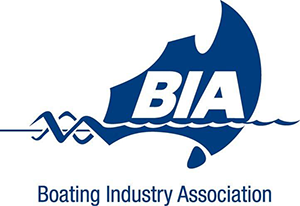SHORE POWER CORD SAFETY
For boats equipped with 240v via shore power, maintaining and correctly running your shore power cord from the power post to the vessel’s power inlet fitting is a must.
Please consider the following:
It is important to use shore power cords approved for marine applications. Unapproved cords are dangerous and should not be used.
Each shore power cord must be tested and tagged annually by a licensed electrician.
Always inspect for damage to the cable or outer cover and fittings. Replace it immediately to avoid any stray current or possibility of electric shock.
Note: Stray electrical current in the water is dangerous. People or pets falling in or swimming in a marina near a stray current will most likely die of electric shock or drowning. Stray current is invisible and deadly.
The power pedestals/posts in marinas are positioned in the centre of the slip so that two boats can access power without the need for cords to be strung across the fingers.
If you have to run your cord across a finger, ensure it will not be damaged and no one will trip or step on it. It is possible to string it under the finger tying it up so that it won't lay in the water, or string it between the boards on the finger if there is space.
DO NOT LAY SHORE POWER CORDS BETWEEN HINGED PONTOONS or FINGERS.
The cord should be below the surface of the dock so that no one can step on it; but, do not lay the shore cord in the hinge between the finger and the dock. Floating docks move up and down and the fingers move from side to side in a wind pinching the Shore Cord and eventually breaking the cable coating. In many cases, the hinges and the dock framing are steel. When the Shore Cord wears, the wire is exposed to the dock, and the whole dock becomes live, leaking electrical current into the water.
Always first unplug the shore end of the shore power cord; then the boat end. DO NOT UNPLUG in the reverse order. When plugging your boat in, always plug into the boat first, then the dock.
Extra cable, if not coiled properly, can be hazardous to boaters walking on the docks.
Reduce Clutter:
To reduce dock clutter and improve safety, tie your shore power cord under the dock out of sight above the water or between the boards on the finger dock (not in the hinge).
Make Semi-Permanent:
Most finger docks are high enough above the water and with enough framework that you can suspend your shore cord under the finger dock from a series of short pieces of light line or electrical ties. Make sure the cord does not hang in the water. The only time it really needs to be removed is when you’re going on a long trip.
Loop the extra cord around the outlet post.
Support Your Shore Power Cord at the Boat’s Socket:
At the boat’s socket, the weight of the cable should be supported and not hanging totally on the fitting. You can loop the cord through one of the rails, so the cable's weight is supported by the rail or use a light piece of line to support the weight.
Larger yachts that run with two shore cords use various methods to reduce the clutter. Join the two cables at intervals with duct tape, Velcro cable ties or electrical ties.

